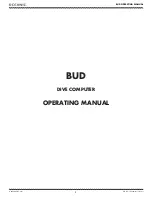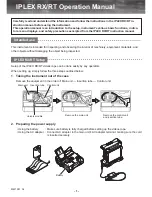
TU_US-BA-e-1714
21
Appendix A Sound velocities
Appendix B Application Notes
Measuring pipe and tubing
When a piece of pipe is measured to determine the thickness of the pipe wall, the
orientation of the transducer is of importance. If the diameter of the pipe is larger than
approximately 4 inches, measurement should be performed with the transducer orien-
tated in the way that the gap in the surface of the sensor is perpendicular (at right
angle) to the long axis of the pipe.
For smaller pipe diameters, two measurements should be performed, one with the sur-
face gap of the sensor perpendicular, another with the gap parallelto the long axis of
the pipe. The smaller one of the displayed values should be taken as the thickness of
that point.
Material
Sound Velocity
In/us
m/s
Aluminum
0.250
6340-6400
Herkömml. Stahl
0.233
5920
Rostfreier Edelstahl
0.226
5740
Messing
0.173
4399
Kupfer
0.186
4720
Eisen
0.233
5930
Gusseisen
0.173-0.229
4400
-
5820
Blei
0.094
2400
Nylon
0.105
2680
Silber
0.142
3607
Gold
0.128
3251
Zink
0.164
4170
Titan
0.236
5990
Blech
0.117
2960
Epoxidharz
0.100
2540
Eis
0.157
3988
Nickel
0.222
5639
Plexiglas
0.106
2692
Styropor
0.092
2337
Porzellan
0.230
5842
PVC
0.094
2388
Quarzglas
0.222
5639
Gummi
0.091
2311
Teflon
0.056
1422
Wasser
0.058
1473



































